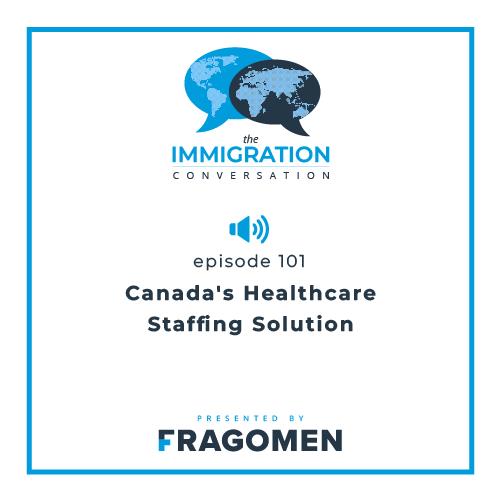
Country / Territory
If you have ever heard of PERM from a friend or coworker, or have ever worked on a PERM case or sat through a presentation on PERM, you may think that it is a tedious labor-intensive process. You may think that PERM is just not worth it for you and your company. I am here to tell you that PERM is much more approachable than you may have once thought.
When approached the right way with the right counsel on your side, you can make PERM part of your regular immigration offerings, without it taking over your day, your life, or your job.
To keep many of the employees that you have on non-immigrant employment-based visa categories, such as the H-1B, PERM may be the only way that they can stay in the U.S. past a certain period of time.
Therefore, making PERM something that is easy and accessible is going to help you in keeping those employees happy, keeping them employed with your company, and retaining new employees. Utilizing the benefits of PERM will also show management that you are committed to the longevity of employees hired. While PERM is not without its associated costs, it pales in comparison to the costs your company will incur in hiring and training new employees when your all-star employees resign for another company willing to sponsor them for permanent residence.
Let me walk you through how PERM can be accessible to any business―small or large―and how it can be an extremely valuable tool in your immigration arsenal in this two-part blog series. In this blog, we will discuss the basics of PERM.
PERM: The Basics
Let's start with the basics. PERM stands for “Program Electronic Review Management.” Most other immigration related filings are lodged with the United States Citizenship and Immigration Services (USCIS); however, this process is governed by and lodged with the United States Department of Labor (DOL). Understanding PERM and being successful in making an application can in large part be attributed to understanding how the DOL is different than USCIS.
First of all, there is no fee paid for lodging a PERM application. This means that the DOL has less resources to draw upon in reviewing applications. In other words, counsel can help you survive a PERM case but you need to prepare your foreign nationals for a long adjudication period.Six months or more is not uncommon, and if the case is audited, it can be much longer. The DOL is also less forgiving. If there is a mistake, it likely means a denial, not a Request for Further Evidence, as would happen with USCIS. While that sounds concerning and daunting, it can be mitigated by hiring the right counsel with a reputation for excellent PERM work. It is important to note that not all immigration attorneys work on PERM, so it would behoove you to do your due diligence when selecting your immigration partner.
In short, PERM is nothing more than a recruitment campaign with a few extra rules. PERM was developed by the DOL over 10 years ago and requires companies to prove that there are no minimally qualified U.S. workers available to fill a position held by a foreign national, and is often the first step for a petitioning company to sponsor a foreign national for permanent residence (otherwise known as a Green Card). In other words, companies are given the burden of showing the DOL that they have recruited for the position and that, of the individuals who applied, none are minimally qualified U.S. workers. You may have noticed that I have now used the word “minimally” twice; this is a keyword and integral to understanding PERM and doing it successfully. The DOL is not interested in whether you can or cannot find a superstar candidate who meets all of your criteria. All the agency is interested in seeing is whether you can find someone who meets your bare minimum criteria, i.e., your bare minimum requirements for the position.
In building strategy for a PERM case, you will be asked by counsel to identify your company's minimum requirements for the job. The second part of this blog will delve deeper into developing a strategy for your PERM applications and how best to allocate company resources to PERM. Keep reading.
Country / Territory
Explore more at Fragomen

Blog post
The UK expands its High Potential Individual (HPI) visa for 2025, broadening eligibility for global graduates and entrepreneurs while introducing new requirements and application caps

Video
The latest Mobility Minute features Manager Alex Hood discussing recent updates to the UK’s High Potential Individual route, including expanded university eligibility, a new annual cap and modernized governance measures.

Media mentions
Managing Partner for the Middle East and Africa Murtaza Khan discusses how the UAE’s flexible migration policies attract talent and support a competitive labour market.

Media mentions
Senior Counsel Mitch Wexler notes that the US expansion of social-media screening to H-1B and H-4 visa applicants will involve a more detailed review of their online activity.

Media mentions
Partner Edward Raleigh highlights the need for companies to prepare for increased H-1B enforcement and ensure compliance with US worker requirements.

Video
In this Mobility Minute, Associate Rebeca Lafond outlines key considerations for international travel to the United States during the holiday season, including documentation requirements, visa processing expectations and enhanced screening on entry.

Media mentions
Partner K. Edward Raleigh explains that the Department of Labor’s Project Firewall expands H-1B oversight beyond individual complaints and increases the scope of employer compliance reviews.

Media mentions
UK Government Affairs Strategy Director Shuyeb Muquit examines how proposed settlement reforms could reshape the path to UK residency by extending qualifying periods and linking eligibility to individual contribution.

Podcast
Partner Cosmina Morariu and Business Immigration Manager Ayana Ibrahimi discuss critical immigration strategies underpinning healthcare-sector staffing in Canada, unpacking how recent policy, mobility and compliance developments are affecting employers and global talent pipelines.

Awards
Fragomen named Private Client Team of the Year at The British Legal Awards 2025, recognising the strength of our UK Private Client practice.

Media mentions
Partner Daniel Brown highlights rising deceptive practices in immigration and emphasizes stronger verification and compliance measures for employers.

Media mentions
Senior Manager Louise Senior highlights how proposed UK reforms could expand right to work checks across hospitality and reshape compliance for businesses.

Blog post
The UK expands its High Potential Individual (HPI) visa for 2025, broadening eligibility for global graduates and entrepreneurs while introducing new requirements and application caps

Video
The latest Mobility Minute features Manager Alex Hood discussing recent updates to the UK’s High Potential Individual route, including expanded university eligibility, a new annual cap and modernized governance measures.

Media mentions
Managing Partner for the Middle East and Africa Murtaza Khan discusses how the UAE’s flexible migration policies attract talent and support a competitive labour market.

Media mentions
Senior Counsel Mitch Wexler notes that the US expansion of social-media screening to H-1B and H-4 visa applicants will involve a more detailed review of their online activity.

Media mentions
Partner Edward Raleigh highlights the need for companies to prepare for increased H-1B enforcement and ensure compliance with US worker requirements.

Video
In this Mobility Minute, Associate Rebeca Lafond outlines key considerations for international travel to the United States during the holiday season, including documentation requirements, visa processing expectations and enhanced screening on entry.

Media mentions
Partner K. Edward Raleigh explains that the Department of Labor’s Project Firewall expands H-1B oversight beyond individual complaints and increases the scope of employer compliance reviews.

Media mentions
UK Government Affairs Strategy Director Shuyeb Muquit examines how proposed settlement reforms could reshape the path to UK residency by extending qualifying periods and linking eligibility to individual contribution.

Podcast
Partner Cosmina Morariu and Business Immigration Manager Ayana Ibrahimi discuss critical immigration strategies underpinning healthcare-sector staffing in Canada, unpacking how recent policy, mobility and compliance developments are affecting employers and global talent pipelines.

Awards
Fragomen named Private Client Team of the Year at The British Legal Awards 2025, recognising the strength of our UK Private Client practice.

Media mentions
Partner Daniel Brown highlights rising deceptive practices in immigration and emphasizes stronger verification and compliance measures for employers.

Media mentions
Senior Manager Louise Senior highlights how proposed UK reforms could expand right to work checks across hospitality and reshape compliance for businesses.

